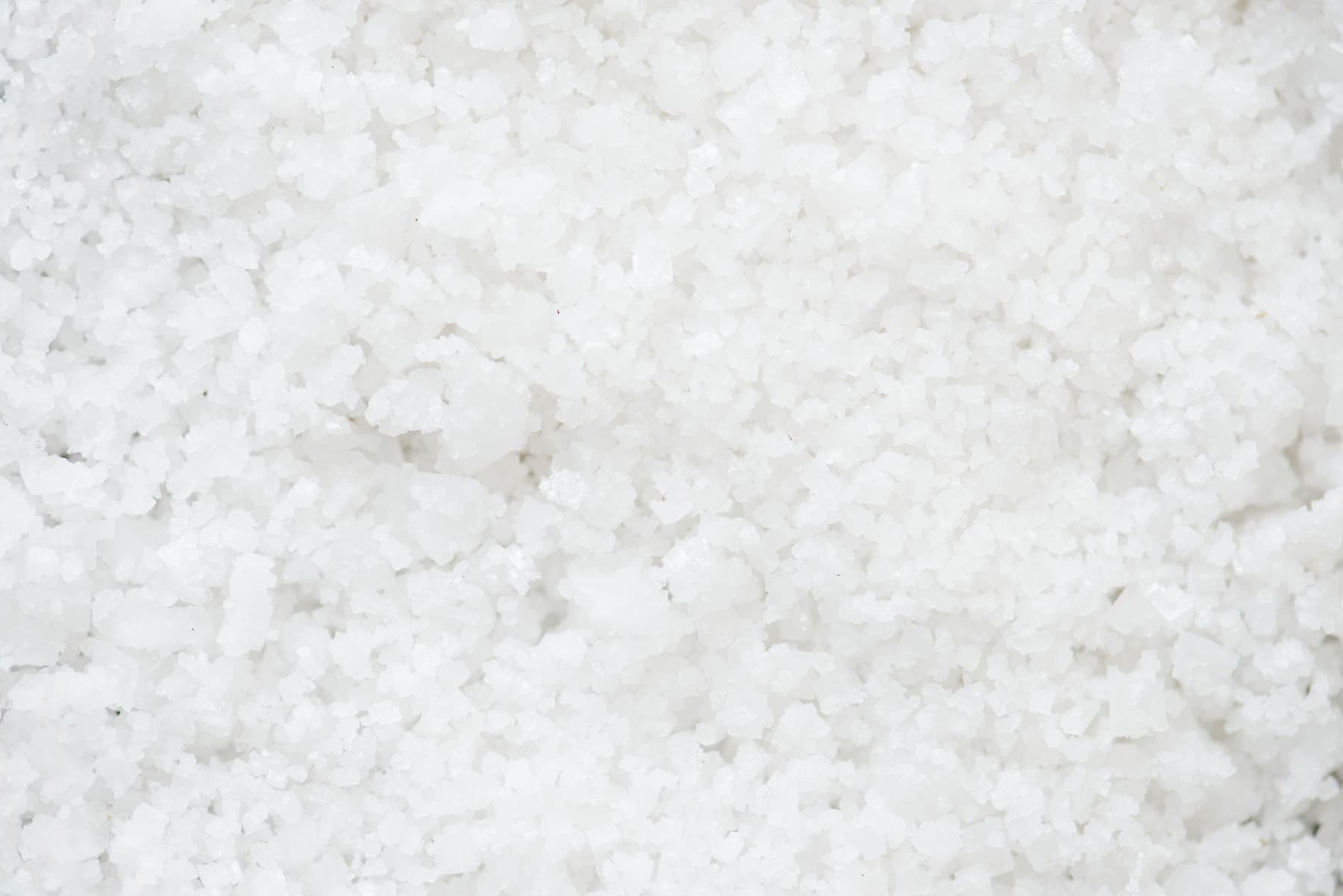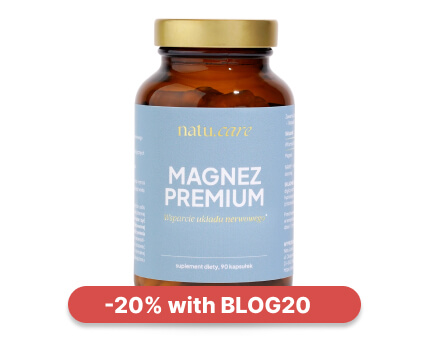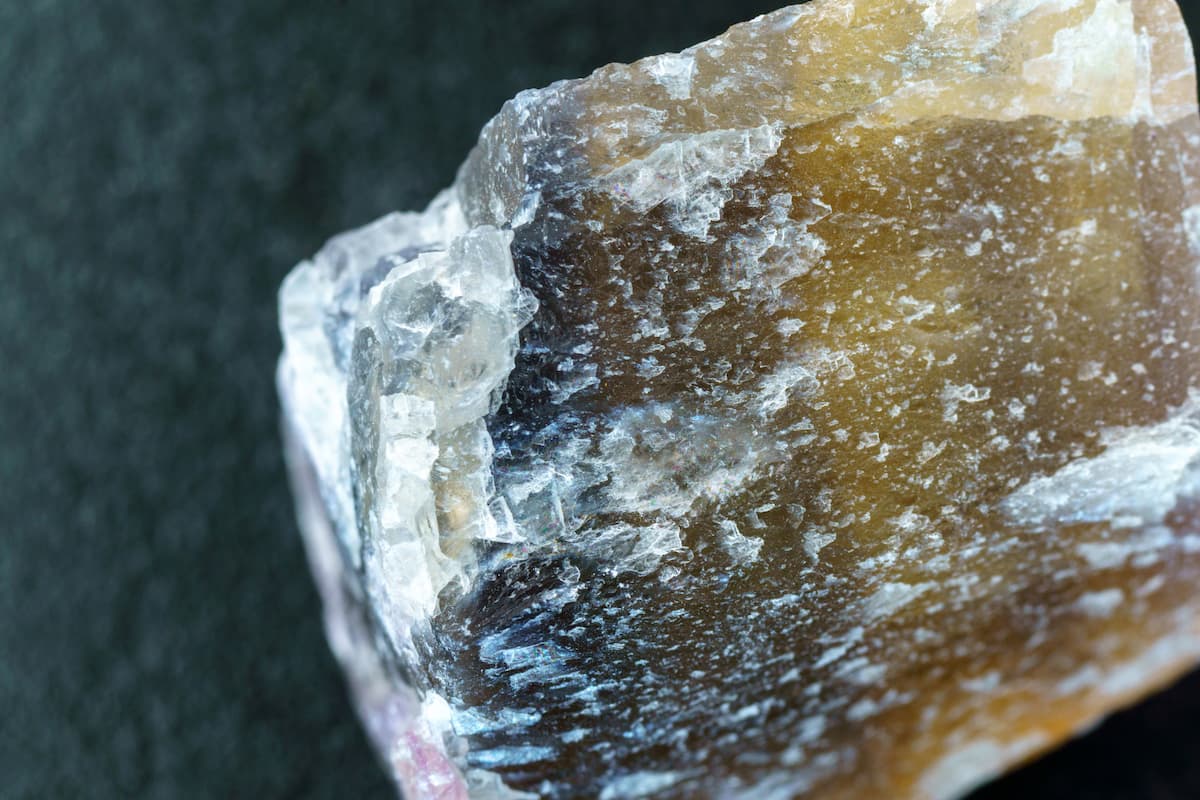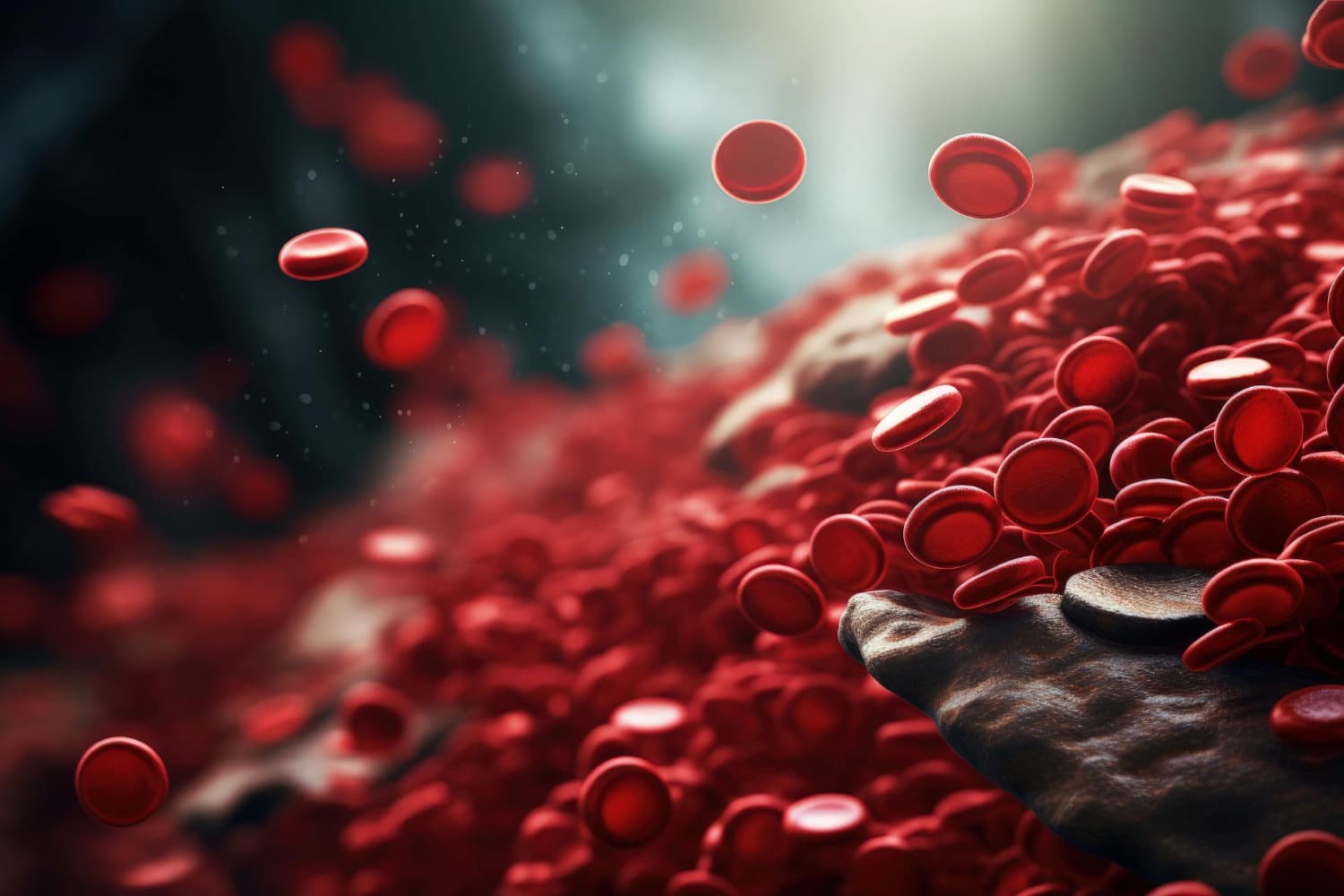Sodium in the body - standard, testing, what it's in, how to supplement
Sodium is an essential element for the body to work properly.


Learn more about our editorial process
.

Learn more about our editorial process
.

Learn more about our editorial process
.

Learn more about our editorial process
.
Why you can trust us
Articles on Natu.Care are written based on scientific research, data from government websites and other reliable sources. The texts are written in cooperation with doctors, nutritionists and other health and beauty experts. Articles are reviewed before publication and during significant updates.
.Learn more about our editorial process
.Information about advertisements
Content on Natu.Care may contain links to products from the sale of which we may receive a commission. When creating content, we adhere to high editorial standards and take care to be objective about the products discussed. The presence of affiliate links is not dictated by our partners, and we select the products we review ourselves completely independently.
.Learn more about our terms and Conditions
.Muscle aches, cramps, weakness or dizziness are some of the symptoms of electrolyte imbalance in the body. And while it is not uncommon for a few sips of liquid prepared from an effervescent tablet to suffice, sometimes this is not enough. This is when it is worth considering whether you are lacking a particular electrolyte, one of which is sodium.
.
This mineral, among other things, helps to maintain water balance and supports muscle function. In short, it is very important, and you can find out exactly what it does in the information we have prepared together with Ilona Krzak, MSc pharmacy.
From this article you will learn:
.- What sodium is and what properties it has. .
- What are the causes of low and elevated sodium in the body. .
- How much sodium should be taken in daily and how to obtain it from the diet. .
- How a serum sodium test works and how much it costs. .

Sprawdź, co połączenie magnezu i witaminy B6 może zrobić dla Twojego zdrowia! -15% z kodem BLOG15
Natu.Care Magnez Premium + Witamina B6
Wesprzyj prawidłowe funkcjonowanie układu nerwowego, krwionośnego i mięśniowego dzięki synergicznemu działaniu magnezu i witaminy B6. Odkryj pełnię korzyści dla Twojego zdrowia każdego dnia!
Sprawdź cenę
Magnez Premium przyjmuję już od 2 miesięcy i naprawdę czuję się znacznie lepiej. Mam więcej energii, przestałam mieć skurcze i nie denerwuję się już tak szybko, co w przypadku bycia mamą – bywa wyzwaniem!@DianaW.
See also:
.
- Best magnesium - ranking .
- Iron - action
- Potassium in the body
- Magnesium - properties .
- Copper - what it helps with .
- Iodine - when to take .
What is sodium?
.
Sodium is a chemical element that is one of the most important electrolytes in the body. Electrolytes are compound ions crucial to most vital functions. Sodium particularly affects the body's water balance, blood pressure, and nerve and muscle functionand.
Every cell has a membrane, and sodium is in every cell..
 .
.
Ilona Krzak Master of Pharmacy
.
Also, sodium is involved in the digestive process, aiding the absorption of certain nutrients - such as glucose - in the intestines. Although it is essential for the body to function properly, too much sodium can lead to negative health consequences such as hypertensionand.
Glucose is large enough that it must have a 'helper' (sodium) to push it across cell membranes..
 .
.
Ilona Krzak Master of Pharmacy
.
Sodium - uses
.
Sodium, one of the most common chemical elements, is intrinsically linked to many aspects of everyday life. It is used in a variety of industries, from glass and paper production, to medicine and nutrition, to life sciences.
- Glass production. Sodium is a very important element in glass production. It is added to the mixture when it is heated to a high temperature to soften the glass and make it easier to shape.
- Paper industry. Sodium is also used in the paper industry to produce cellulose rubber, which is an essential ingredient in many types of paper.
- Medicine. In medicine, sodium is often used in intravenous solutions to help regulate electrolyte levels in the patient's body.
- Nutrition. Sodium is the most common mineral in the diet, known primarily as the main component of table salt.
- Natural Sciences. In the life sciences, sodium is used in various experiments, such as to understand the reactions between metals and water.
When sodium is burned in a fire, the element colours the flame yellow. This is used in fireworks..
 .
.
Ilona Krzak Master of Pharmacy
Sodium vs. salt
Salt and sodium are not the same thing. Sodium is a chemical element with the symbol Na, a single-component alkaline metal. Table salt, or sodium chloride (NaCl), is a chemical compound consisting of sodium and chlorine. In the human diet, sodium is most commonly provided through table salt, but the two substances have different properties and uses.
Natu.Care Collagen Premium 5000 mg, mango & passion fruit

- Collagen content: 5000 mg marine collagen hydrolysate
- Additional active ingredients: vitamin C, low molecular weight hyaluronic acid (and L-theanine and coenzyme Q10 in cocoa flavoured collagen or vitamin A and vitamin E in mango–passion fruit flavoured collagen)
- Form: powder sachets
- Dose: 1 sachet per day
- Sufficient for: 30 days
Product description
Fish collagen from the Natu.Care brand in a dose of 5000 mg, based on certified ingredients of the best quality. Regular supplementation will positively influence the appearance of the skinóry, hairów and nails – they will be rebuilt and strengthened from the inside.
In addition to collagen, which is valuable for health and beauty, it also offers other active ingredients that help to maintain a youthful complexion, shiny hair and strong nails.
The formula contains a sufficient portion of the active ingredient to positively affect joints, the musculoskeletal system and immunity.
Natu.Care Premium Collagen is available in two flavours – Cacao Bloom and Rise&Shine. Both formulas are based on the following active ingredients: marine collagen hydrolysate, wild roseóbud extract and hyaluronic acid.
Additionally, Cacao Bloom contains natural L-theanine, coenzyme Q10 and defatted Dutch cacao. Rise&Shine instead contains vitamin E and vitamin A.
These are the best collagens in the world.
These best fish collagens on the market also rós taste – Cacao Bloom is a treat for chocolate lovers. Rise&Shine will appeal to those whoólike the refreshing taste of mangoófruit and passion fruit.
Pros and cons
Pros:
- Vitamin C supports the body's collagen production, enhancing its effectiveness.
- An effective dose of hyaluronic acid, which additionally supports skin hydration and joint health.
- Fish collagen absorbs 50% better. Additionally, the manufacturer specifies the fish species it is sourced from (Atlantic cod).
- The composition has been tested by the independent and accredited J.S. Hamilton laboratory.
- MSC (Marine Stewardship Council) quality certification, which confirms that the collagen source supports sustainable fishing practices.
Cons:
- None.
Additional information
Natu.Care's fish collagen receives praise for its delicious taste. You won't find the fishy aftertaste that often comes through in other collagens. Plus, you have two tasty flavors to choose from: cocoa and mango-passionfruit.
Active ingredients like coenzyme Q10, hyaluronic acid, and natural L-theanine provide anti-inflammatory and antioxidant benefits while slowing down aging processes.
User review
Super, after about 6 weeks of use, the skin on my face became noticeably firmer. Wonderful taste.
Ania ZalewskaNatu.Care customer
Natu.Care Premium collagen 10 000 mg, mango-maracuja

- Collagen content: 10,000 mg marine collagen hydrolysate
- Additional active ingredients: vitamin C, low molecular weight hyaluronic acid (and L-theanine and coenzyme Q10 in cocoa flavoured collagen or vitamin A and vitamin E in mango–passion fruit flavoured collagen)
- Form: powder sachets
- Dose: 1 sachet per day
- Sufficient for: 30 days
Product description
One of the strongest collagens on the market, whichós provides as much as 10,000 mg in a daily serving. This allows the formula to effectively support the condition of the skin, hair and nails.
With this supplement, you will support your beauty, which will allow you to visually stop the ageing process and feel a second youth!
Natu.Care Collagen Premium 10 000 mg comes in two flavours – cherry and mango-maracuja. Both formulas have the same product backbone – collagen, hyaluronic acid and vitamin C.
In the cherry version you additionally find glucosamine, chondroitin and Indian frankincense resin extract. Mango-maracuja, on the other hand, contains vitamin E and vitamin A.
Pros and cons
Pros:
- Tested collagen formula – SeaGarden, whose effects have been confirmed in clinical studies.
- Effective dose of hyaluronic acid, additionally moisturizing the skin and positively impacting joint health.
- Vitamin C supports the body’s natural collagen production.
- The composition has been tested by the independent and accredited J.S. Hamilton laboratory.
- The product has an MSC (Marine Stewardship Council) quality certification – the collagen source supports sustainable fishing practices.
Cons:
- None.
Additional information
Users praise Natu.Care Collagen Premium for the easy dissolvability of the powder.
User review
I noticed a significant improvement in my skin texture after a few weeks of taking collagen regularly. My complexion is now as soft as velvet!
Natu.Care Collagen Premium 10000 mg, cherry

- Collagen content: 10,000 mg of hydrolyzed bovine collagen
- Additional active ingredients: vitamin C, low molecular weight hyaluronic acid, glucosamine, chondroitin, extract of Indian frankincense resin (boswellia serrata)
- Form: powder sachets for drinking
- Serving: 1 sachet per day
- Lasts for: 30 days
Product description
One of the strongest collagens on the market, providing as much as 10,000 mg per daily serving. This product can effectively support the condition of joints, skin, hair, and nails.
With this supplement, you will support your skeletal and joint system as well as your beauty, helping you visually halt the aging process and feel rejuvenated!
Pros and cons
Pros:
- The daily portion of collagen is very large – as much as 10,000 mg.
- Proven collagen formula – COLLinstant, whose effectiveness has been confirmed in clinical studies.
- Effective dose of hyaluronic acid, which additionally moisturizes the skin and positively affects joint health.
- Vitamin C supports the body's natural collagen production.
- Glucosamine is a fundamental building block of compounds found in joint cartilage and a component of collagen that gives elasticity to connective tissue in tendons.
- Chondroitin is a natural component found in the human body, mainly in cartilage. This large molecule (mucopolysaccharide) has the ability to absorb water, which helps maintain the elasticity and resilience of cartilage.
- Frankincense resin extract supports blood circulation and joint mobility and reduces their stiffness. It may help alleviate inflammatory conditions.
- The composition has been tested by the independent and accredited J.S. Hamilton laboratory.
Cons:
- None.
Additional information
Users praise Natu.Care Collagen Premium for the easy dissolving of the powder.
Premium Sodium Butyrate
Product description
Premium Sodium Butyrate is a natural support for your digestive system. With a high dose of butyric acid (940 mg), it supports the regeneration of the intestinal mucosa, improving gut health and function, and aids in the absorption of nutrients. By taking care of your intestines, you're taking care of the health of your entire body.
Studies involving people suffering from irritable bowel syndrome confirm that sodium butyrate is ideal for supporting issues related to bacterial flora imbalances (for example, after antibiotic therapy), constipation and diarrhea, inflammation of the intestinal mucosa, or a diet low in fiber.
Premium Sodium Butyrate capsules are made using the innovative DRcaps® technology. This guarantees that the active ingredients in the product are protected from the destructive effects of stomach acids and digestive enzymes. As a result, we can be sure that the beneficial ingredients are released in the small intestine and are fully absorbed by our body.
Premium Sodium Butyrate from Natu Care is 100% tested, and its composition contains only the highest quality raw materials.
Pros and cons
Pros:
- Supports digestive system function
- Helpful for various gastrointestinal conditions, including IBS
- High dose of butyric acid in each capsule
- Eco-friendly, clean, and tested composition
- Free from added sugar, gluten, GMOs, and lactose
- Innovative capsule technology - DRcaps
Cons:
- None
Additional Information
Take 3 capsules daily at any time of the day, preferably with a meal. Swallow the capsules whole with water.
Premium Sodium Butyrate is intended for adults.
The product should be used under medical supervision.
User review
I've been using the product for 2 weeks. My stomach feels lighter, and my digestion has improved. I recommend it.
Natu.Care Premium Magnesium + Vitamin B6

- Magnesium content per day: 305 mg
- Additional active ingredients: Vitamin B6 (2.1 mg)
- Form: capsules
- Serving size: 3 capsules per day
- Sufficient for: 30 days
Product description
The Premium Magnesium + Vitamin B6 dietary supplement is a comprehensive product that combines three organic forms of magnesium (citrate, malate, and diglycinate) and vitamin B6 in highly absorbable forms.
Magnesium is an essential mineral without which our bodies cannot function properly. It supports the immune, nervous, and muscular systems, maintains electrolyte balance, and is involved in cell division and the regulation of mental functions.
Research shows that magnesium supplementation is even more effective when accompanied by vitamin B6, which is included in our product. Vitamin B6 is responsible for the proper functioning of the nervous and immune systems, as well as the proper functioning of the heart.
If you want to safely get rid of feelings of fatigue, concentration problems, hair loss, muscle cramps, trembling, or irritability, reach for Premium Magnesium from Natu.Care, tested by the independent, certified laboratory J.S. Hamilton Poland.
Pros and cons
Pros
- Supports the proper functioning of the nervous and immune systems.
- Reduces feelings of fatigue and tiredness.
- Maintains proper psychological functions.
- The purity of the ingredients (free from anti-caking agents, artificial fillers, and additives such as titanium dioxide, microcrystalline cellulose, talc, magnesium stearate, and silicon dioxide) has been confirmed by laboratory tests.
- High absorption of ingredients.
- Soft capsules that are easy to swallow.
- Suitable for vegetarians and vegans.
Cons
- None.
Additional information
Take with a meal, 3 capsules per day.
The capsules should be taken with at least 250 ml of water.
If you have trouble sleeping, it is advisable to take 1 capsule in the morning and 2 capsules in the evening, no later than 4 hours before bedtime.
Avoid combining with products high in calcium (milk, yogurt, cheese), as this may negatively affect magnesium absorption.
Pregnant and breastfeeding women should consult a doctor before starting supplementation.
User review
I’m very impressed with the speed of delivery. The product itself is of high quality and absorbs well. After two weeks of supplementation, I’ve noticed a significant improvement in muscle recovery, especially during periods of intense training. I highly recommend it!
Product description
The dietary supplement contains omega-3ᵀᴳ, or omega-3 acids in the form of trójglyceridesów. Scientific studies suggest that this form of fatty acidsós up to 2 times better absorbed than the estersós present in many dietary supplements on the market. This means that you are assured of their effectiveness and of supplying yourself with valuable omega acids.
Fatty acids omega-3 are derived from wild anchovy oil. It is a rich source of healthy fats that are essential for the health of the cardiovascular, immune and nervous systems, as well as the proper function of vision, joints muscles.
Scientific research suggests that wild anchovies are a good source of healthy fats.
Scientific research also suggests that an adequate intake of omega-3 fatty acidsós protects against and supports the treatment of depression and anxiety disorders. In addition, omega-3s influence the hydration and appearance of the skinóry and support healthy sleep.
.
The formula contains a total of 750 mg of EPA+DHA acidsós, which is three times higher than the recommended minimum of 250 mg for the Polish population. Omega-3 TG Premium has studies indicating that its TOTOX is 9, which is a very good result.
Supplementation of omega-3 fatty acidsóis recommended for anyone who does not eat 1–2 portions (approximately 300 g) of oily fish per week. Children during growth, seniors, physically active people, vegans and vegetarians, as well as patients undergoing cardiovascular treatment and prevention of heart disease also have an increased need.
Pros and cons
The dietary supplement contains omega-3ᵀᴳ, or omega-3 acids in the form of trójglyceridesów. Scientific studies suggest that this form of fatty acidsós up to 2 times better absorbed than the estersós present in many dietary supplements on the market. This means that you are assured of their effectiveness and of supplying yourself with valuable omega acids.
Fatty acids omega-3 are derived from wild anchovy oil. It is a rich source of healthy fats that are essential for the health of the cardiovascular, immune and nervous systems, as well as the proper function of vision, joints muscles.
Scientific research suggests that wild anchovies are a good source of healthy fats.
Scientific research also suggests that an adequate intake of omega-3 fatty acidsós protects against and supports the treatment of depression and anxiety disorders. In addition, omega-3s influence the hydration and appearance of the skinóry and support healthy sleep.
.
The formula contains a total of 750 mg of EPA+DHA acidsós, which is three times higher than the recommended minimum of 250 mg for the Polish population. Omega-3 TG Premium has studies indicating that its TOTOX is 9, which is a very good result.
Supplementation of omega-3 fatty acidsóis recommended for anyone who does not eat 1–2 portions (approximately 300 g) of oily fish per week. Children during growth, seniors, physically active people, vegans and vegetarians, as well as patients undergoing cardiovascular treatment and prevention of heart disease also have an increased need.
Additional information
The dietary supplement contains omega-3ᵀᴳ, or omega-3 acids in the form of trójglyceridesów. Scientific studies suggest that this form of fatty acidsós up to 2 times better absorbed than the estersós present in many dietary supplements on the market. This means that you are assured of their effectiveness and of supplying yourself with valuable omega acids.
Fatty acids omega-3 are derived from wild anchovy oil. It is a rich source of healthy fats that are essential for the health of the cardiovascular, immune and nervous systems, as well as the proper function of vision, joints muscles.
Scientific research suggests that wild anchovies are a good source of healthy fats.
Scientific research also suggests that an adequate intake of omega-3 fatty acidsós protects against and supports the treatment of depression and anxiety disorders. In addition, omega-3s influence the hydration and appearance of the skinóry and support healthy sleep.
.
The formula contains a total of 750 mg of EPA+DHA acidsós, which is three times higher than the recommended minimum of 250 mg for the Polish population. Omega-3 TG Premium has studies indicating that its TOTOX is 9, which is a very good result.
Supplementation of omega-3 fatty acidsóis recommended for anyone who does not eat 1–2 portions (approximately 300 g) of oily fish per week. Children during growth, seniors, physically active people, vegans and vegetarians, as well as patients undergoing cardiovascular treatment and prevention of heart disease also have an increased need.
Expert opinion
The dietary supplement contains omega-3ᵀᴳ, or omega-3 acids in the form of trójglyceridesów. Scientific studies suggest that this form of fatty acidsós up to 2 times better absorbed than the estersós present in many dietary supplements on the market. This means that you are assured of their effectiveness and of supplying yourself with valuable omega acids.
Fatty acids omega-3 are derived from wild anchovy oil. It is a rich source of healthy fats that are essential for the health of the cardiovascular, immune and nervous systems, as well as the proper function of vision, joints muscles.
Scientific research suggests that wild anchovies are a good source of healthy fats.
Scientific research also suggests that an adequate intake of omega-3 fatty acidsós protects against and supports the treatment of depression and anxiety disorders. In addition, omega-3s influence the hydration and appearance of the skinóry and support healthy sleep.
.
The formula contains a total of 750 mg of EPA+DHA acidsós, which is three times higher than the recommended minimum of 250 mg for the Polish population. Omega-3 TG Premium has studies indicating that its TOTOX is 9, which is a very good result.
Supplementation of omega-3 fatty acidsóis recommended for anyone who does not eat 1–2 portions (approximately 300 g) of oily fish per week. Children during growth, seniors, physically active people, vegans and vegetarians, as well as patients undergoing cardiovascular treatment and prevention of heart disease also have an increased need.
Natu.Care Vitamin D 2000 UI
Product description
Vitamin D plays a crucial role in our health and well-being. It affects calcium and phosphate metabolism, which translates to healthy bones and teeth. It also helps regulate the immune system, and studies indicate its influence on the functioning of the nervous system.
Vitamin D, although called a “vitamin,” is actually a prohormone that our body produces on its own, primarily under the influence of sunlight. Unfortunately, our modern lifestyle contributes to deficiencies of this essential vitamin. Working in enclosed office buildings, using (necessary!) SPF creams, and covering the body with clothing all make it very difficult, if not impossible, to obtain adequate levels of vitamin D from sunlight. This is why appropriate, year-round supplementation is so crucial.
Vitamin D from Natu.Care is a well-tested vitamin D3 suspended in safflower oil, a plant known for its numerous health benefits. The convenient, easy-to-swallow capsule will make supplementation a part of your daily, healthy routine, improving your overall well-being.
Pros and cons
Pros:
- Ensures proper functioning of the immune system
- Supports the maintenance of healthy bones and teeth
- Maintains proper heart, kidney, and muscle function
- Tested by an independent, certified laboratory
- Convenient and easy-to-swallow capsule
- Clean composition - free from added sugar, gluten, GMOs, lactose, and without preservatives or colorants
Cons:
- None.
Additional Information
Pregnant women and breastfeeding mothers should consult a doctor before using the product. This dietary supplement is intended for a healthy adult population up to the age of 75.
Collagen Booster - Glow Stories

- Active ingredients: bamboo shoot extract, Quatrefolic®, L-Methionine, L-cysteine, vitamin E, vitamin A, niacin (vitamin B3), vitamin B6, vitamin B2 (riboflavin), biotin, zinc, copper
- .
- Form: capsules
- .
- Dose: 1 capsule per day
- .
- Sufficient for: 60 days
- .
Product description
A dietary supplement containing vitamins, minerals and plant extracts thatósupport the skinóhand, hair and nails. The product is especially distinguished by the form of folate – it is Quatrefolic, whichós absorbed very well and is natural.
In addition to valuable vitamins and minerals, such as vitamin A, E, B3, B2 and biotin, the formula contains bamboo shoot extract, whichóry further enhances your beauty.
Pros and cons
A dietary supplement containing vitamins, minerals and plant extracts thatósupport the skinóhand, hair and nails. The product is especially distinguished by the form of folate – it is Quatrefolic, whichós absorbed very well and is natural.
In addition to valuable vitamins and minerals, such as vitamin A, E, B3, B2 and biotin, the formula contains bamboo shoot extract, whichóry further enhances your beauty.
Additional information
A dietary supplement containing vitamins, minerals and plant extracts thatósupport the skinóhand, hair and nails. The product is especially distinguished by the form of folate – it is Quatrefolic, whichós absorbed very well and is natural.
In addition to valuable vitamins and minerals, such as vitamin A, E, B3, B2 and biotin, the formula contains bamboo shoot extract, whichóry further enhances your beauty.
Sodium - properties and effects
.
Sodium is a key ingredient that plays an important role in the regulation of many bodily functions. Its adequate concentration is important for the normal course of numerous vital processes.
What is sodium responsible for in the body?
.
Regulation of blood pressure
.
Sodium promotes fluid balance in the body by 'attracting' water. In doing so, it increases the volume of the blood and thus its pressure. How does this process work according to MA Pharmacy?
The idea is that if we have different concentrations of solutions on both sides of the membrane (more salt on one side, less on the other side), the water from the solution with the lower concentration will start to penetrate the membrane to the side with the higher concentration to dilute it (it strives for equality, both sides should be equal). This is what happens in the case of blood and sodium..
 .
.
Ilona Krzak Master of Pharmacy
.
If we provide too much sodium, when it goes into the blood and its concentration is higher, it pulls water from the tissues into the blood vessels (which are elastic), which affects the pressure - adds pharmacist.
But it doesn't stop there; sodium also affects the renin-angiotensin-aldosterone (RAA) system, which is the main regulator of blood pressure. When the body's sodium levels are too low, the body starts to secrete renin, leading to the production of angiotensin II, which increases blood pressureand.
Angiotensin II also stimulates the secretion of aldosterone, a hormone that promotes sodium reabsorption in the kidneys, further leading to water retention and increased blood pressure .
Neural conductance
.
Sodium in the body is essential for the transmission of messages in the brain and body. When neurons are activated, sodium ions flow into the neuron, generating voltage changes that create this signal. Sodium is also needed to return neurons to their original resting state after a signal has been transmitted, ensuring that they are ready to conduct the next signaland.
A little simpler it looks like this...
.
Sodium is like a message relay in the body. When the brain wants to tell the muscles what to do, it uses, among other things, sodium to send that message.
Think of it like the information flowing through the electrical wires in your home. When you turn on a light, an electric current flows through the wire, illuminating the room. In the body, instead of an electric current, there is sodium, which helps send information from the brain to other parts of the body.
So when you want to catch a ball, for example, your brain sends a message via sodium to your hand, telling it what to do. The sodium helps this message to travel along the pathway (neurons) in your body until it reaches your hand.
Sodium helps your hand to travel along the pathway (neurons) in your body until it reaches your hand.
In simpler terms, this principle also applies to the cardiac stimulus-conduction system. Each depolarisation carries the message that the heart is to contract. If there is not a large enough stimulus, the impulse will not be produced..
 .
.
Ilona Krzak Master of Pharmacy
.
Fluid balance
.
Sodium also regulates the total water content of the body and the maintenance of fluid homeostasis. It is the main cation (positive ion) found in the body's extracellular fluids, which attracts water and helps to maintain osmotic pressure. This pressure affects the movement of water between cells and their surroundingsand.
The body's sodium balance is also linked to the regulation of kidney function. The kidneys control sodium levels in the body through the processes of filtration and reabsorption. When sodium levels in the body are high, the kidneys increase sodium excretion through the urine to restore balanceand.
If sodium levels are low, the kidneys retain salt to maintain the right amount of water in the body. Therefore, a balance between salt intake and salt excretion by the kidneys is important for the body to function properly.
Metabolic processes
.
Sodium is integral to digestion, as it affects the secretion of certain digestive enzymes. Furthermore, it is important for the process of transporting glucose and amino acids across cell membranes, which is fundamental to the operation of many metabolic systems, such as glycolysisand. And glycolysis the process by which glucose (sugar) is converted into energy.
Acid-base balance
.
Sodium affects the regulation of acid-base balance in the human body. As the name suggests, this balance is defined by the ratio of acids to bases in the tissues and fluids in the body. Sodium bases neutralise excess acids that can build up due to eating processed foods, stress or exposure to toxinsand.
Sodium helps to maintain the body's pH through an alkaline sodium buffer, which maintains the balance of sodium, potassium and hydrogen ions.
Additionally, sodium supports the body in absorbing and transporting nutrients, which is also key to maintaining optimal acid-base balanceand.
.
Daily sodium requirements
.
Daily sodium requirements depend on age. The dietary standards for the Polish population suggest the following sufficient intake for specific groups of people:
.
|
Age . |
Sufficient daily sodium intakeand |
|
0-6 months |
120 mg |
|
7-11 months |
370 mg |
|
1-3 years |
750 mg |
|
4-6 years |
1000 mg |
|
7-9 years |
1200 mg |
|
10-12 years |
1300 mg |
|
> 13 years |
1500 mg |
Research
Scientific work suggests, that most people consume 3-5 grams of sodium per day. According to experts, these are safe portions that have a positive effect on the body's function. Despite this, there is no shortage of people who take as much as 10 g of this mineral per day - this is significantly too much, so ensure you limit your sodium intake.
Low sodium - symptoms and causes of deficiency
.
Sodium deficiency, medically known as hyponatraemia, occurs when sodium levels in the human body are low. The most common causes include excessive water loss from the body and inadequate hydration. What flushes sodium out of the body?
Cause of low sodium in the bodyand:
- Accelerated water loss in the body. Accelerated water loss, such as through excessive sweating, vomiting, diarrhoea or urination, can lead to low sodium levels. When you lose too much fluid, the body may not be able to maintain an adequate concentration of this element. .
- Inadequate hydration. Drinking huge amounts of water in a short period of time can counteract the kidneys' ability to excrete water, making it difficult to maintain normal sodium levels. This phenomenon is often referred to as 'water intoxication'.
- Kidney diseases. The kidneys have important functions in regulating sodium levels in the body. Therefore, disruption of their function can lead to deficiency by reducing their ability to filter and return salt.
- Heart or liver failure. Both heart and liver failure can lead to fluid retention in the body, resulting in sodium dilution. In heart failure, the body often retains fluids, leading to oedema. Similarly, severe failure of the liver (e.g. during cirrhosis), can lead to retention of large amounts of fluid.
- Influence of medications. Some medications can disrupt electrolyte balance and lead to hyponatraemia (sodium deficiency). Examples of such medications include antidepressants, diuretics, NSAIDs and some painkillers.
- Hormonal disorders. Endocrine disorders such as SIADH Syndrome can lead to excessive water retention and as a result - sodium deficiency.
Low sodium - symptoms
.
Low sodium levels in the body can cause a number of - not always clear-cut - symptoms. The lack of this element disrupts the water-electrolyte and nerve balance, leading to various problems. With a slight deficiency, symptoms are often subtle and may go unnoticed, but more severe cases of hyponatraemia can cause clear and severe symptoms.
Hyponatraemia is a common electrolyte disorder in patients with chronic kidney disease..
 .
.
Ilona Krzak Master of Pharmacy
What are the symptoms of substandard sodiumand?
.
Fatigue is one of the most common symptoms of sodium deficiency.
|
Symptom . |
What it is characterized by . |
||
|
Fatigue |
Fatigue is one of the most common symptoms of sodium deficiency. As this nutrient is essential for muscle and nerve function, a deficiency can lead to feelings of weakness, fatigue or lack of energy.
|
Fatigue |
|
|
Dizziness and loss of balance |
Variation in blood sodium concentration can affect brain function, causing symptoms such as dizziness, balance problems and even fainting. |
||
|
Mental disorders |
Extreme sodium deficiency can lead to cognitive impairment, including concentration problems, confusion and even hallucinations. In some cases, dangerous seizures can even occur. Sodium deficiency can lead to a severe seizure. |
||
|
Headaches |
Squalls in sodium concentration can result in changes in the blood vessels in the brain, which will manifest as headaches.
|
Pr. |
|
|
Nause of nausea and vomiting . |
Low sodium levels can interfere with the digestive system, leading to feelings of nausea that can result in vomiting. |
||
|
Muscle spasms and convulsions |
Sodium is crucial for proper muscle function, so a deficiency can lead to muscle spasms or even convulsions. |
Sodium is also crucial for muscle function, so a deficiency can lead to muscle spasms or even convulsions. |
Note
Symptoms of low sodium are not characteristic and may be indicative of other conditions, so prolonged discomfort needs to be consulted by a doctor.
There are studies that suggest a correlation between low sodium levels and the course of ovarian cancer. It has been noted that low levels of this element have an impact on a poorer postoperative prognosis and lower survival with cancer.
 .
.
Ilona Krzak Master of Pharmacy
.
Is low sodium in pregnancy dangerous?
.
Low sodium, or hyponatraemia, is a condition that can be dangerous to both the mother and the developing foetus, especially when it lasts for a long period. In the mother, severe hyponatraemia can result in swelling of the brain and, in the case of prolonged deficiency, even permanent damage to the brain. Furthermore, a deficiency of this electrolyte can affect the normal development and functioning of the child's nervous systemand.
.
This is why it is important to remember that every mother-to-be should have an individually tailored diet that provides her with all the necessary nutrients. What's more, regular check-ups and consultation with a doctor and dietician are also key to keeping both mother and baby healthy.
How to replenish sodium in the body?
.
When sodium levels are abnormally low, supplementation should be addressed as soon as possible. Long-term deficiency can lead to serious changes in the body, so it is essential to take care of adequate levels of this nutrient in the body. How to replenish sodium in the body?
Drinking electrolyte fluids
.
Drinking fluids containing electrolytes, such as isotonic sports drinks, can help replenish sodium deficiencies. These drinks are usually formulated to provide the right proportions of electrolytes (sodium, potassium or magnesium), which can help maintain normal sodium concentrations in the body.
Home electrolytes
.You can also make your own electrolyte drink at home. Use 500 ml of water, a tablespoon of natural honey, a pinch of salt, and lemon or orange juice and you are ready to go!
Salt-rich diet
.
Cooking salt, or sodium chloride, is one of the easiest ways to supplement sodium. Introducing foods high in it, such as beef, pork, cheeses (especially halloumi), green olives, rye bread, sauerkraut and cucumbers, as well as just sprinkling salt on food, can help to supplement sodium deficiency.
>
Note
Most sodium-rich foods, especially smoked meat, tinned foods, crisps, salted sticks or nuts, are not beneficial for many organs (e.g. the liver). Therefore, they should be consumed in moderation.
Sodium-containing supplements
.
In cases where low sodium levels are caused by certain health conditions, your doctor may recommend sodium-containing supplements (e.g. in tablets). Such supplements can help to control sodium levels in the body and prevent the potentially dangerous effects of hyponatraemia.
Consultation with a nutritionist
.
If you are having difficulty supplementing sodium with your diet, it is a good idea to consult a nutritionist. A professional will help you create a personalised dietary plan that takes into account your health, lifestyle and dietary preferences, and will therefore help you to properly supplement sodium.
Improved sodium in the body
.
An increased concentration of sodium (hypernatremia) in the body, known as hypernatremia, can result from a number of reasons, including an unhealthy diet, medical conditions or inadequate water intake. What are the most common reasons for elevated sodium in the bodyand?
- Unhealthy diet. Excessive sodium intake, most commonly associated with processed and fast food, can lead to elevated sodium levels in the body. Excess of this element usually causes water retention in the body, which also leads to increased blood pressure. .
- Dehydration. Dehydration results in increased sodium concentrations in the blood, as the amount of water in the body decreases while the amount of sodium remains the same.
- Disease conditions. Some diseases, such as diabetes or selected kidney conditions, can cause a number of disorders, including excess sodium. In these disease states, the kidneys are unable to effectively remove adequate amounts of sodium from the body. .
- Medications. Some agents, especially diuretics (diuretics), can increase the concentration of sodium in the body. These drugs increase the excretion of water from the body, which can potentiate the effect of dehydration.
Hypernatraemia is defined as a serum sodium concentration above 145 mmol/l. It is an electrolyte disorder often seen in the hospital setting, resulting in a high mortality rate..
 .
.
Ilona Krzak Master of Pharmacy
.
What are the symptoms of excess sodium in the body?
.
Overabundance of sodium manifests with numerous symptoms mainly related to water disorders. Symptoms can be subtle, but at the same time lead to more serious ailments if the excess is not reduced in time.
Decreased urine volume
.
Too much sodium can lead to dehydration, which in turn can result in less urine excretion. In addition, the urine may be darker, which is a classic symptom of dehydration. Reduced urine excretion is the body's protection against further water lossand.
Thirst sensation
.
Excess sodium in the body leads to a destabilisation of the fluid balance, resulting in a strong feeling of thirst. This is the body's natural response to dehydration - the body tries to 'encourage you' to drink and restore the sodium balanceand.
Elderly people may not feel thirsty. Therefore, dehydration and electrolyte disturbances are not difficult in them..
 .
.
Ilona Krzak Master of Pharmacy
.
Oedema and high blood pressure
.
Prolonged excess sodium can lead to water retention and oedema, especially around the feet and ankles. What's more, too high levels of this element can also increase blood pressure as it causes the body to retain more water, increasing blood volumeand.
Bad feeling
.
Other symptoms of excess sodium may include feelings of weakness, headaches, fatigue and, in extreme cases, vomiting, convulsions and unconsciousness. These much more serious symptoms are usually the result of prolonged or very severe hypernatraemiaand.
Mental distress
.
Excess sodium can also lead to changes in mental status. Symptoms include disorientation, concentration problems, hallucinations, irritability and even coma. The occurrence of these symptoms usually indicates severe hypernatraemia and requires immediate medical interventionand.
Respiratory distress
.
In extreme cases, hypernatraemia will result in breathing difficulties. Such conditions require unreserved medical attention as they can be life-threateningand.
Study
A 2020 research report, which analysed scientific papers conducted on a total of 616,905 people, suggests that high dietary sodium intake increases the risk of cardiovascular disease. The analysis indicates that for every 1g of dietary sodium over the suggested servings, the likelihood of these conditions increases by 6%and.
How to reduce sodium levels in the body
.
Reducing sodium levels in the body should start with a change in diet. Try to eat fewer sodium-rich foods such as processed foods, fast food and salty snacks. Instead, choose fresh fruit, vegetables and low sodium proteins (e.g. fresh oily fish, poultry, legumes) that help maintain a healthy balance of minerals in the body.
Drinking more water can also help dilute sodium in the blood and facilitate its elimination by the kidneys. However, it is important not to overdo the amount of fluids, as this can lead to dangerously low sodium levels.
Do not overdo it.
Remember also, that in some cases, elevated sodium levels can be the result of other health problems or medications being taken. This is common with kidney disease or diuretics. In these situations, consultation with a doctor and medical intervention may be necessary.
What sodium is in - food products
.
Let's make one thing clear at the outset - you need small amounts of sodium for your body to function properly. Most of us even consume too much of it, so you should be careful with sodium-rich products.
People in the US, for example, consume an average of about 3,400 mg of sodium per day, which is more than twice the minimum daily portion for Poles.
Interestingly, more than 40% of the sodium you consume each day comes from just a few foods. Whatand?
- Cooking salt. .
- Smoked foods. .
- Conserves. .
- Bread. .
- Beef, pork, offal. .
- Cured meats. .
- Canned vegetables. .
- Soups. .
- Snacks (crisps, crackers, breadsticks).
- Snacks.
- Cheeses. .
- Eggs. .
What foods are rich in sodium and potassium?
.
Sodium and potassium are two important electrolytes that most people easily supply themselves with their diet. You already know which foods will provide you with sodium. But which are rich in potassiumand?
- Dry soya. .
- Cocoa. .
- Dried beans. .
- Dried apricots.
- Dried apricots.
- Pumpkin seeds. .
- Pistachios. .
- Avocados. .
- Potatoes. .
- Atlantic salmon. .
Serum sodium - testing
.
Serum sodium testing is carried out to detect a possible excess or deficiency of this element in the body. It can be carried out on an empty stomach or after a meal - depending on your doctor's instructions. On the day before the test, you should not eat fatty or heavy meals or drink alcohol.
What are the indications for a serum sodium test?
.
Most often it is the doctor who decides whether to carry out a sodium test. Few people decide to take this step themselves. What health conditions might prompt a specialist to order a serum sodium test?"
- Diabetes .
- Cardiac or renal insufficiency.
- Diabetes.
- Oedematous syndromes.
- Diabetes.
- Hepatic cirrhosis or disease thyroid disease. .
- Increased blood pressure. .
- Hyperventilation-related diseases. .
Sodium - standard
.
The exact blood sodium standard may vary depending on the laboratory. However, it will most likely fluctuate between 135 and 145 mmol/l. Any values outside this range should prompt you to visit your doctor for a check-upand.
What is the price of a blood sodium test?
.
The price of a sodium test depends on the laboratory. Most often, however, it ranges from a few to several zlotys. This test is also reimbursed by the National Health Fund. Therefore, if you have a referral from your doctor, you can count on checking the sodium level in your body for free.
See also:
.
- Vitamin B12 - properties
- Vitamin D3 - effects .
- Vitamin A - functions in the body .
- Vitamin B1 - properties .
- Vitamin E - effects .
- Pantothenic acid - what it is .
- Folic acid (vitamin B9) - properties .
- Vitamin B3 - effects
- Vitamin K - where it occurs
- Vitamin B6 - what it is .
- Vitamin C - properties .
Summary
.
- Sodium is a key electrolyte for many vital functions, affecting the body's water balance, blood pressure, as well as nerve and muscle function.
- Sodium is a key electrolyte for many vital functions, affecting the body's water balance, blood pressure, as well as nerve and muscle function.
- This mineral has a wide range of applications, both in industry and medicine, including in the manufacture of glass, paper and also in nutrition. .
- Overconsumption of sodium can lead to negative health consequences, such as hypertension. .
- Daily sodium intake depends on age, but the norms for the Polish population suggest an intake between 120 mg for infants to 1,500 mg for people over 13 years of age.
- Symptoms of low sodium levels include fatigue, dizziness, loss of balance, mental confusion, headaches, nausea and muscle cramps and seizures. .
- Symptoms suggestive of elevated sodium include decreased urine, thirst, oedema and high blood pressure, malaise, mental disturbances and respiratory distress. .
- Blood sodium standards range from 135-145 mmol/l, and the price of a sodium test depends on the laboratory, but is usually a few to several zlotys.
FAQ
.When is a urine sodium test performed?
.Urine sodium testing is performed when a doctor suspects electrolyte imbalance, kidney failure, chronic kidney disease, hypertension or heart disease. This diagnostic also helps to determine how the body regulates sodium levels, and is also helpful in the diagnosis of SIADH syndrome or Addison's disease.
What does sodium contain?
.Sodium is commonly found in many foods. It is the main component of table salt. High amounts of sodium will also provide you with processed foods such as tinned foods, sausages, cheese, chips and fast food. In addition, significant portions of this mineral are contained in baked goods, cured meats, ready-made sauces and soups.
.Is sodium a metal?
.Yes, sodium is a metal. It belongs to the alkali group of metals in the periodic table. Sodium is a light, soft, silvery metal that reacts very easily with other substances, particularly water. This is also the reason why sodium in nature always occurs in combinations with other elements, for example in the form of table salt (NaCl).
How to supplement potassium and sodium in the body?
.Potassium potassium and sodium replenishment in the body can be achieved through a proper diet. Sodium is present in table salt and many processed foods. Potassium, on the other hand, can be found in fruit and vegetables such as bananas, oranges, potatoes and spinach.
In cases of deficiency, dietary supplements are also used. In some situations, it may also be necessary to consult a doctor or dietician to tailor the diet to individual needs.
Potassium can be found in a wide range of foods.
Does sodium raise blood pressure?
.Yes, consuming high amounts of sodium, mainly in the form of table salt, can lead to elevated blood pressure. Sodium retains water in the body, which increases the volume of blood circulating in the blood vessels, thereby raising blood pressure. Therefore, people with hypertension are advised to limit their sodium intake.
Why does sodium decrease in the body?
.Decreased sodium in the body, a phenomenon called hyponatraemia, can result from a variety of causes. Often it is the result of excessive water intake, which leads to dilution of sodium in the blood. Other causes can be certain diseases (e.g. adrenal insufficiency, kidney disease, ADH mis-secretion syndrome) or the use of certain drugs (e.g. diuretics).
What are electrolytes?
.Electrolytes are minerals that conduct electrical impulses, playing key roles in numerous physiological functions. The main electrolytes in the body are sodium, potassium, calcium and magnesium. Sodium and potassium regulate fluid balance and nervous system function. Calcium is essential for bones and muscles, and magnesium supports many enzymatic processes.
What is sodium responsible for in the body?
.Sodium has important functions in the body, regulating fluid balance and blood pressure. It interacts with potassium in the conduction of nerve impulses, essential for the proper functioning of muscles, including the heart.
Sodium is also essential in the digestive process, affecting the production of serum and digestive juices. Disruption of these functions can lead to serious health problems.
Sodium is also essential for digestion, affecting the production of serum and digestive juices.
.
Sources
.See all
.Agócs, R., Sugár, D., & Szabó, A. J. (2020). Is too much salt harmful? Yes. Pediatric Nephrology (Berlin, Germany), 35(9), 1777–1785. https://doi.org/10.1007/s00467-019-04387-4
Baumer-Harrison, C., Breza, J. M., Sumners, C., Krause, E. G., & de Kloet, A. D. (2023). Sodium Intake and Disease: Another Relationship to Consider. Nutrients, 15(3), 535. https://doi.org/10.3390/nu15030535
Cappuccio, F. P., Campbell, N. R. C., He, F. J., Jacobson, M. F., MacGregor, G. A., Antman, E., Appel, L. J., Arcand, J., Blanco-Metzler, A., Cook, N. R., Guichon, J. R., L'Abbè, M. R., Lackland, D. T., Lang, T., McLean, R. M., Miglinas, M., Mitchell, I., Sacks, F. M., Sever, P. S., ... Willett, W. (2022). Sodium and Health: Old Myths and a Controversy Based on Denial. Current Nutrition Reports, 11(2), 172-184. https://doi.org/10.1007/s13668-021-00383-z
Cook, N. R., He, F. J., MacGregor, G. A., & Graudal, N. (2020). Sodium and health-Concordance and controversy. The BMJ, 369, m2440. https://doi.org/10.1136/bmj.m2440
Farquhar, W. B., Edwards, D. G., Jurkovitz, C. T., & Weintraub, W. S. (2015). Dietary Sodium and Health: More Than Just Blood Pressure. Journal of the American College of Cardiology, 65(10), 1042-1050. https://doi.org/10.1016/j.jacc.2014.12.039
Grillo, A., Salvi, L., Coruzzi, P., Salvi, P., & Parati, G. (2019). Sodium Intake and Hypertension. Nutrients, 11(9), 1970. https://doi.org/10.3390/nu11091970
Hunter, R. W., Dhaun, N., & Bailey, M. A. (2022). The impact of excessive salt intake on human health. Nature Reviews. Nephrology, 18(5), 321–335. https://doi.org/10.1038/s41581-021-00533-0
Jackson, S. L., King, S. M. C., Zhao, L., & Cogswell, M. E. (2016). Prevalence of Excess Sodium Intake in the United States-NHANES, 2009-2012. MMWR. Morbidity and Mortality Weekly Report, 64(52), 1393-1397. https://doi.org/10.15585/mmwr.mm6452a1
Jaques, D. A., Wuerzner, G., & Ponte, B. (2021). Sodium Intake as a Cardiovascular Risk Factor: A Narrative Review. Nutrients, 13(9), 3177. https://doi.org/10.3390/nu13093177
Malta, D., Petersen, K. S., Johnson, C., Trieu, K., Rae, S., Jefferson, K., Santos, J. A., Wong, M. M. Y., Raj, T. S., Webster, J., Campbell, N. R. C., & Arcand, J. (2018). High sodium intake increases blood pressure and risk of kidney disease. From the Science of Salt: A regularly updated systematic review of salt and health outcomes (August 2016 to March 2017). Journal of Clinical Hypertension (Greenwich, Conn.), 20(12), 1654-1665. https://doi.org/10.1111/jch.13408
Mente, A., O'Donnell, M., & Yusuf, S. (2021a). Sodium Intake and Health: What Should We Recommend Based on the Current Evidence? Nutrients, 13(9), 3232. https://doi.org/10.3390/nu13093232
Mente, A., O'Donnell, M., & Yusuf, S. (2021b). Sodium Intake and Health: What Should We Recommend Based on the Current Evidence? Nutrients, 13(9), 3232. https://doi.org/10.3390/nu13093232
Messerli, F. H., Hofstetter, L., Syrogiannouli, L., Rexhaj, E., Siontis, G. C. M., Seiler, C., & Bangalore, S. (2021). Sodium intake, life expectancy, and all-cause mortality. European Heart Journal, 42(21), 2103-2112. https://doi.org/10.1093/eurheartj/ehaa947
O'Donnell, M., Mente, A., Alderman, M. H., Brady, A. J. B., Diaz, R., Gupta, R., López-Jaramillo, P., Luft, F. C., Lüscher, T. F., Mancia, G., Mann, J. F. E., McCarron, D., McKee, M., Messerli, F. H., Moore, L. L., Narula, J., Oparil, S., Packer, M., Prabhakaran, D., ... Yusuf, S. (2020). Salt and cardiovascular disease: Insufficient evidence to recommend low sodium intake. European Heart Journal, 41(35), 3363-3373. https://doi.org/10.1093/eurheartj/ehaa586
Patel, Y., & Joseph, J. (2020). Sodium Intake and Heart Failure. International Journal of Molecular Sciences, 21(24), 9474. https://doi.org/10.3390/ijms21249474
Rust, P., & Ekmekcioglu, C. (2017). Impact of Salt Intake on the Pathogenesis and Treatment of Hypertension. Advances in Experimental Medicine and Biology, 956, 61-84. https://doi.org/10.1007/5584_2016_147
Strazzullo, P., & Leclercq, C. (2014). Sodium1. Advances in Nutrition, 5(2), 188-190. https://doi.org/10.3945/an.113.005215
Wang, Y.-J., Yeh, T.-L., Shih, M.-C., Tu, Y.-K., & Chien, K.-L. (2020). Dietary Sodium Intake and Risk of Cardiovascular Disease: A Systematic Review and Dose-Response Meta-Analysis. Nutrients, 12(10), 2934. https://doi.org/10.3390/nu12102934
.
Editorials
Meet the team

Ilona Krzak obtained her Master of Pharmacy degree from the Medical University of Wrocław. She did her internship in a hospital pharmacy and in the pharmaceutical industry. She is currently working in the profession and also runs an educational profile on Instagram: @pani_z_apteki


Fluoride is an essential mineral for the proper functioning of the body. How does it work and is it harmful? Check!

Iron deficiency is a dangerous condition leading to serious neurological and skin symptoms.

Phosphorus is a mineral element that supports bone health, nervous system function and also energy metabolism.



